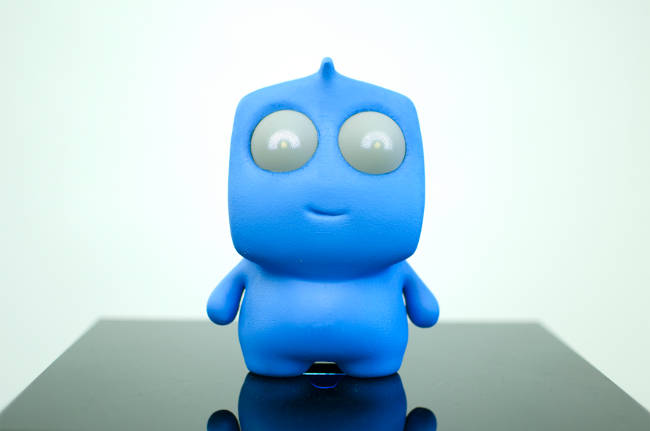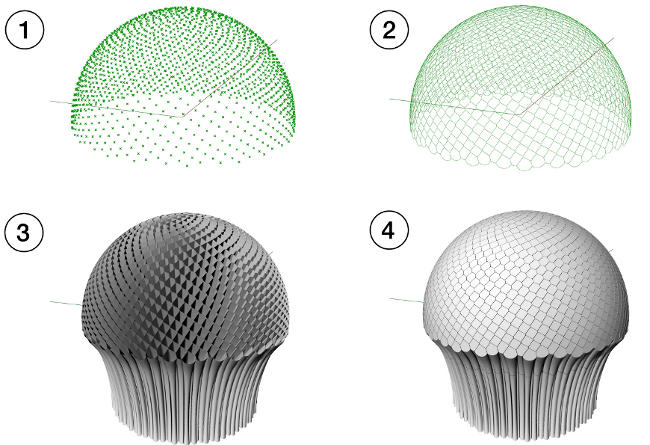The eyes are the windows to the soul, or so goes the proverb. As humans, we use our eyes to express a wide variety of emotions, often without even realizing we’re doing so. Animators spend years studying eye movements to help them create characters with a range of believable expressions, but the eyes of robots and interactive toys are far more difficult to manipulate than those of cartoon characters.

Researchers Eric Brockmeyer and Ivan Poupyrev of Disney Research Pittsburgh have been studying the challenge of creating physical characters with expressive eyes for some time — and they think they’ve found a solution.
Using a new printed optics technology developed by Disney Research Pittsburgh and Carnegie Mellon University, Brockmeyer and Poupyrev have designed character eyeballs made from bundles of 3D printed optical fibers.

This novel technology, named PAPILLON, projects moving images from the receiving ends of the bundled fibers to the surface (the eyeballs), creating the illusion of animated eyes. In addition to moving eyes, PAPILLON can project expressive symbols (such as dollar signs) in place of pupils to convey dramatic, cartoon-like reactions.
According to Brockmeyer, the technology was a natural extension of other advances made at Disney Research Pittsburgh. “We came up with the idea for PAPILLON by thinking about how our previous work with 3D printed optics might be applied to character eyes,” he explains. “The ability to control the pipe configurations allowed us to build spherical shapes with simple mapping between the eye surface and the projection surface. Using the Fibonacci pattern, which is found repeatedly in nature, we found a solution to effectively connect a 2D to 3D point cloud, which minimized pipe twisting and image distortion.”

The 3D-printed bundles direct and bend light much like a fiber optical element, but at a fraction of the cost of bundled fiber optics. Which makes PAPILLON not only innovative, but economical.
Poupyrev, who was named one of the 100 Most Creative People in Business by Fast Company magazine in 2013, foresees a variety of possible applications for the new tech. “PAPILLON is scalable and flexible,” he says. “We envision it being used for building interactive toys, supplemental characters for videogames, robots or perhaps eventually even human prosthetic eyes.”
To illustrate their new technology, Brockmeyer, Poupyrev and associates Moshe Mahler, Joanne Dauner and James Krahe designed three softball-sized characters with PAPILLON-enabled eyes. They named them Beep, Boop and Iggy.

“One of our goals was to create minimal displays, to figure out how much resolution you really need to express emotion,” says Brockmeyer. “It turns out you don’t need that much to convey a compelling interactive experience.”
Beep, Boop and Iggy demonstrated their novel abilities to legions of fascinated onlookers at the SIGGRAPH 2013 Emerging Technologies exhibit in July. The characters responded to the gestures of human visitors and demonstrated a broad range of possible interactions, such as playing music together.
“The public response for Papillon has been really good,” says Brockmeyer, and then adds, “It helps to place your tech in adorable critters with cute names.”
To see Beep, Boop and Iggy in action, check out the teaser video below.
For more information, visit the PAPILLON webpage. ACM/SIGGRAPH members can access the paper PAPILLON: Expressive Eyes for Interactive Characters free in the ACM Digital Library.
Not a member? Join ACM SIGGRAPH today and receive full access to the ACM Digital Library, which houses thousands of papers on the latest advances in computer graphics and interactive technology.

Leave a Reply
You must be logged in to post a comment.